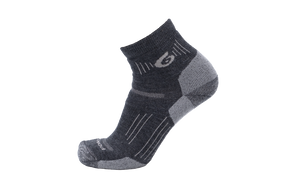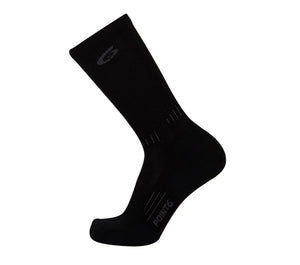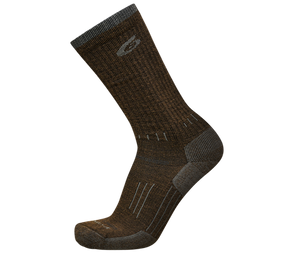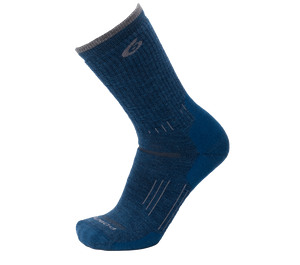How To Make Your Maiden Backpacking Voyage a Success
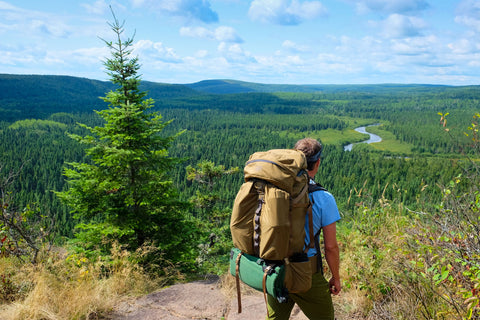
This article is the first of a three part series on preparing for a backpacking trip.
by John Huston
Point6 ambassador John Huston is a professional polar explorer and outdoor educator. He started his career as an instructor at the Voyageur Outward Bound School in Ely, MN. John has led wilderness expeditions for over 20 years and has been the supervisor of Northwestern University’s new student backpacking program.
In this post we’ll discuss some of the keys to setting up an enjoyable first backpacking trip. We’ll discuss route planning, training, basic logistics and safety, equipment that will keep you comfortable, food and routines to sustain you mentally and physically, and on-trail time management.
My first backpacking trip: 100% amateur epic.
The summer after graduating high school my friend and I set off into Wyoming’s Bighorn Mountains and lasted one painful night. Altitude sickness, dehydration, monster headaches, massive loads, shivering through the night, and inedible food crushed the beauty of our alpine lake campsite.
My second backpacking trip: again, 100% amateur epic.
The next summer my brother and I backpacked from the north rim of the Grand Canyon to the bottom at Bright Angel Campground on the Colorado River. We were a mess: smashed bleeding toes, dehydration, awful PowerBar digestion problems, stupid heavy packs, and heat exhaustion. It got worse the next day on the way back up. The views were incredible, but my mangled toes is my foremost memory.
The funny thing, looking back, is that at the time I thought I was well prepared for those trips. I had read a bunch of Backpacker Magazine articles, practiced carrying my pack on day hikes, broken in my boots, looked at the maps over and over, etc… But I was young and my approach was gung-ho and haphazard. I needed to slow down. I needed a framework.
Here are 10 elements that can help establish your own framework for a successful backpacking trip. Deliberate preparation and setting up things to be comfortable and in control are the main themes.
- Choose the right people.
The team is going to determine so much of your experience in the backcountry and in preparation for the trip. Ideally the team should buy into a framework that makes you comfortable. A team with unaligned motivations can lead to all sorts of problems on trail such as different hiking paces and impatient decision making. A team with a shared approach is more likely to take care of people’s basic needs and have a supportive, fun morale.
- Find an appropriate route.
Choose a route that you’re confident you can make without pushing too much. Avoid the temptation to take on a burly route. An easy going route is especially important for the first few days of the trip and allows you to adjust to life on trail. It is reassuring to be able to take long breaks at scenic spots, side hikes without packs, and not feel rushed while in camp or when hiking. When route stress is running the show the dominoes can quickly go the other way.
- Training: carry a loaded pack and practice cooking with a camp stove.
Training is excellent for physical and mental preparation. Taking day hikes (or just walking around your neighborhood) with a loaded pack lets your mind and body adjust to what’s coming. For most big polar expeditions we’ll train for 6 months or longer. Injury prevention and physical capacity are essential for us, but more importantly, the training conditions our minds for the pace and exertions of expedition life. Carrying a heavy pack around allows you to identify areas of discomfort, test boot and pack fit, and better informs packing decisions by feeling the weight of those choices. Along the same lines, practice cooking with your camp stove a couple times, so that you know it works and so that you are comfortable with it.
- Dial in the safety and logistics.
Take a few hours to identify EMS and support services (ranger stations, hospitals, etc..) in the area you’ll be taking your trip. Carry this information in hard copy on a piece of paper or in your journal, not just on your phone. Figure out how you are going to communicate in an emergency situation. Mobile phones, satellite communication devices, and in-person communication are all options to think through. Locate the fastest routes to places where you know you can communicate with the outside world or evacuate. Brief someone responsible, who you know personally, with your itinerary. It can be a good idea to give them a copy of the local information you have gathered so they can be a point of contact for you if needed.
- Plan a fun, tasty menu.
Putting effort into your backpacking menu is always well worth it. I focus on taste and hearty satisfying foods that have a good food value (calorie) to weight ratio. On expedition my body hankers for salty, savory foods, healthy fat, and chocolate. Some of my favorite snacks are parmesan cheese chunks, high quality summer sausage, and salty nut mixes. When we take our kids hiking we always bring some form of chocolate. A fun spice kit can make a big difference in breakfasts and dinners. I’ve been on expeditions that have a menu so good that we literally look forward to every bite and I’ve struggled through the opposite too. Great food on trail can really take the experience up a few notches. We’ll get into details on what to eat when backpacking in two weeks for the third post of this series.
- Find comfortable equipment...especially boots, backpack, and sleeping system.
Feet are first in my mind. It is essential to sort out your footwear for a backpacking trip. There are plenty of comfortable, lightweight hiking shoes or approach shoes on the market that can work great for a lot of trips. Big high top boots have their place too (scree slopes, a history of ankle injuries, travel on snow, etc…). Bring a pair of running shoes for camp. They can also double as another option for hiking. Break in your footwear. Figure out which socks are best for your footwear, often medium thickness or thin merino wool socks do well.
A backpack should comfortably carry with the load transferred to the hips and the front of the shoulders. Get to know all the pack straps and how to adjust the fit and load carriage. Make sure all the buckles work. Waterproof the pack with a liner (5 mil construction grade trash bag), waterproof stuff sacks, and a rain cover.
Good nights of sleep in the backcountry are the best. The sleeping system needs to keep you warm, comfortable, and insulated from the ground. I’m a fan of down sleeping bags because they pack down small and seem to do better in a wider range of temperatures. An inflatable mattress, like a Therm-a-rest, can add a lot of comfort. But a closed-cell foam pad, like a Ridgerest, will work just fine. Several tent mates over the years have called me a nester because I’m finicky in how I put extra clothes and soft items under my pad to make my sleeping surface flat and cozy.
Next week in the second article of this series we’ll discuss how to pack for a backpacking trip.
- Plan for bad weather.
The Norwegians say there is no such thing as bad weather, only bad clothing. There is some truth to that. But the saying could easily end with: only bad attitudes … or perhaps more helpful – only bad planning. If a team plans for bad weather it will end up with the right gear, a proper shelter, and more realistic expectations. Some scenarios to prepare for include staying safe during lightning, managing cold rainy conditions, securing camp in high winds, and being aware of local weather possibilities like flash floods, extreme heat, and big temperature fluctuations.
- Get up and out of camp early.
Waking up and hitting the trail early in the morning is a fantastic way to start the day and it pays dividends later on. Sometimes we’ll depart camp before dawn and then have breakfast while watching sunrise from an overlook. During the quiet and peaceful morning, mileage can get gobbled up easily. Those early miles can eliminate route stress and give a sense of control. It also makes for early arrivals into camp which leave time for dipping in a lake and chilling out with the day’s work complete.
- Sustain yourself with smart travel routines.
I’m a big fan of moving for 60 to 90 minutes and then taking a 10-15 minute break for food and water intake. This sort of routine serves several purposes. First of all, it supports a person with regular sustenance and decreases the chance of dehydration. The goal is to keep energy and hydration relatively level throughout the day and avoid the crashes and lethargy that can come from going too long between refueling or eating a lot at one time. This schedule also breaks up a day into small bite-sized pieces. A person will start to view the day in terms of the number of hiking sessions instead of one big chunk of distance.
- Keep a journal about what is working and changes that are needed.
Backpacking is the best way to learn how to backpack...if you remember what you learned. Taking notes on the experience is fun and invaluable the next time you set out. My expedition journals are full of notes detailing what works well (sustains) and what could be improved (deltas), as well as notes on equipment, routines, routes, weather, food, etc…
There can be quite a lot of preparation that goes into a backpacking trip, but a lot of it becomes more efficient after a few trips. Preparation is part of the fun because of how it pays off on trail and how it brings trail life into normal day-to-day life at home. In the next couple weeks we’ll dig into packing a pack and backpacking food in the next two posts in this series.



